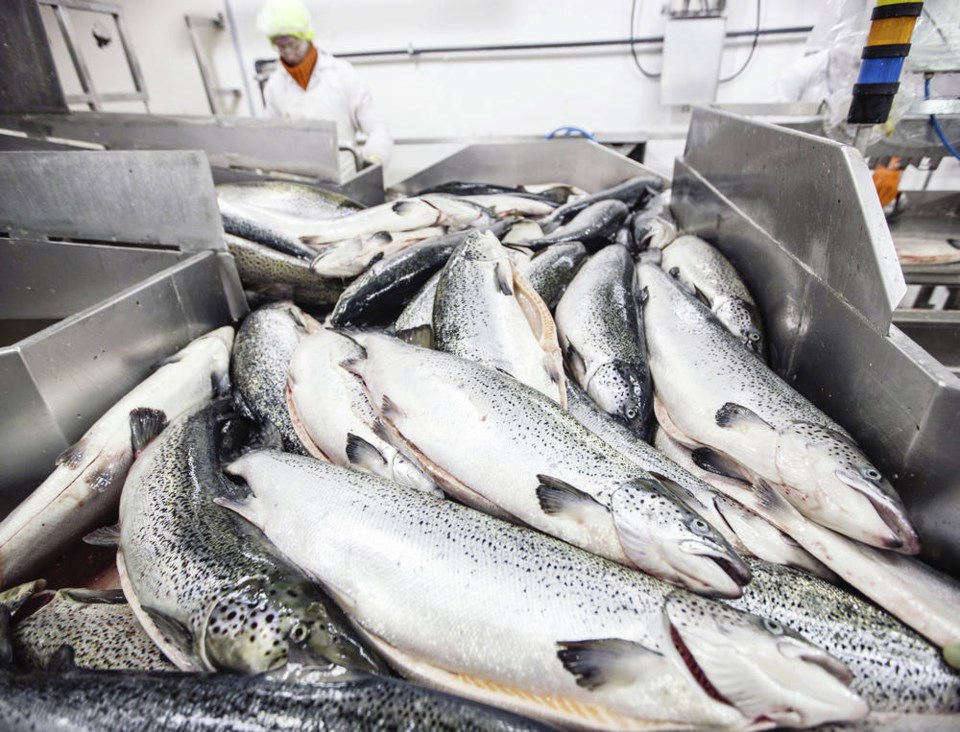No salmon pauses to consider whether swimming thousands of kilometres through streams, roaring rivers and ocean, then all the way back again is a good idea.
Whether it spends its early, freshwater life in Okanagan Lake, Cowichan Lake, the Adams River or the headwaters of the Stikine River, salmon fry don’t stop to think: “Life here is pretty sweet — let’s settle down here until we feel ready to make babies and croak.”
It doesn’t question whether undertaking a journey through a gauntlet of fish-munching fish, birds, seals, whales, bears, wolves, humans, etc. is worthwhile. It doesn’t doubt the wisdom of hurling itself up rapids and small waterfalls and around rockslides so that it can lay or fertilize a few thousand eggs, then die.
In fact, if a spawning salmon thought at all, it would probably think it had a good life. After all, it’s travelled and seen a lot of the world. And if it has made it back to its spawning grounds, well, heck, it has survived.
That’s more than 99.9 per cent of its siblings could say.
A female salmon can lay 1,000 to 17,000 eggs. Few of those survive, and even fewer fish that hatch from those eggs live to maturity. Three fish returning from migration for every parent that spawns is considered a good return.
But all things salmon are changing, up and down the coast. Runs are down, predators are up, stream temperatures are rising, while river levels are falling. Even in peak years in big rivers — typically every four years for sought-after sockeye— there’s trouble.
For two years, the Big Bar landslide north of Lillooet on the iconic Fraser made a section of the migration route nearly impassible.
Salmon aren’t safe at sea, either. Researchers reported in April that weak wind patterns likely spurred the wave of extreme ocean heat that swept salmon territory in the North Pacific last summer. Waters off some parts of the west were a record-breaking 2.5 degrees C above normal.
The marine heatwave was named the “Blob 2.0” after the “Blob” of 2013–2015, which affected the marine life and fisheries throughout the region for several years after.
Another study, led by University of British Columbia scientist William Cheung, combined the latest climate, ocean and fish data and models to quantify the impact of future marine heatwaves on fish stocks along the West Coast.
The results showed that future “blobs” would intensify climate-change effects, leading to smaller and fewer salmon and changing their distribution.
Depending on the species, salmon can spend two to seven years at sea, where the fish pack on more than 99 per cent of their adult weight. But in some species, some guys return to the spawning beds early.
These early returners, called jacks, ensure genes get mixed among the different year runs. Jacks, however, are considerably smaller than the hardened males that have completed their full enlistment periods in the deep-sea salmon navy.
But jacks may be becoming more common. Researchers from Simon Fraser University and elsewhere recently reported that the size of Chinook, chum, coho, and sockeye salmon returning to rivers in Alaska — which include the Stikine, Alsek and other rivers that flow from B.C. into Alaska — has declined dramatically since the late 1950s.
Data collected from 12.5 million fish over 60 years reveals the decreases in body sizes are due mainly to salmon returning to their spawning grounds at younger ages, implying that the ocean is becoming a riskier place for salmon.
By staying in the ocean longer and growing larger, salmon may have greater success in spawning and laying more eggs, but each additional year increases a salmon’s risk of not returning to reproduce at all.
The researchers say climate change and related events such as the Blob and Blob II, as well as competition with growing numbers of wild and hatchery salmon in the ocean, contributed to the size declines across all species and regions.
While young salmon aren’t — and biologically cannot — hunker down for life in their birth streams, it seems that young adult salmon are having second thoughts about spending more time at sea than they absolutely have to.



